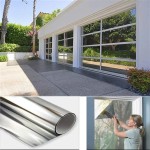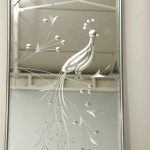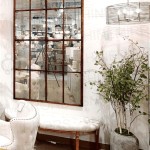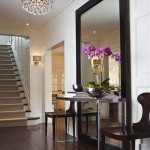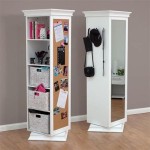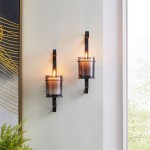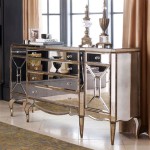Mounting a Mirror on a Plaster Wall: A Comprehensive Guide
Mounting a mirror on a plaster wall presents unique challenges compared to drywall. Plaster, a common material in older homes, is harder and more brittle than drywall, requiring specific techniques and hardware for secure and damage-free installation. This guide provides a detailed walkthrough of the process, ensuring a successful outcome for homeowners tackling this DIY project.
Understanding Plaster Walls
Plaster walls, prevalent in homes built before the 1950s, consist of a wooden lath base coated with multiple layers of plaster. This construction creates a hard, durable surface but can be prone to cracking and crumbling if not handled carefully during mirror installation. The key to success lies in identifying the lath behind the plaster and using appropriate fasteners.
Essential Tools and Materials
Gathering the necessary tools and materials beforehand streamlines the mounting process. A well-prepared workspace contributes to efficiency and minimizes the risk of errors.
- Stud finder
- Pencil
- Level
- Drill with appropriate drill bits (including masonry bits if needed)
- Screwdrivers
- Wall anchors (specifically designed for plaster)
- Screws (compatible with chosen wall anchors)
- Mirror mounting hardware (D-rings, wire, cleats, etc.)
- Safety glasses
- Measuring tape
Locating Wall Studs
Locating studs within the plaster wall provides the most secure mounting points for heavier mirrors. Utilizing a stud finder helps identify these structural supports. Mark the stud locations with a pencil for easy reference during installation.
Choosing the Right Fasteners
Given the nature of plaster, selecting appropriate fasteners is crucial. Standard drywall anchors are often insufficient for the weight of a mirror. Opt for heavy-duty wall anchors specifically designed for plaster or masonry. Toggle bolts and expanding anchors provide reliable grip in this material. Consider the weight and size of the mirror when making your selection.
Drilling Pilot Holes
Drilling pilot holes before inserting fasteners prevents plaster cracking and ensures accurate placement. Use a drill bit slightly smaller than the diameter of the screw or anchor being used. Applying gentle pressure during drilling minimizes stress on the plaster surface.
Installing Wall Anchors
Following the manufacturer's instructions, carefully install the chosen wall anchors. Over-tightening can damage the plaster, while under-tightening compromises the security of the mirror. Ensure the anchors sit flush with the wall surface.
Attaching Mirror Mounting Hardware
D-rings, wire, or specialized mirror cleats are commonly used for securely hanging the mirror. Choose the appropriate hardware based on the mirror's size and weight, and follow the manufacturer’s instructions for proper installation on the back of the mirror. Measure and mark the placement of the hardware carefully for level hanging.
Hanging the Mirror
With the wall anchors and mirror hardware installed, carefully lift and hang the mirror onto the anchors or screws. Use a level to ensure the mirror hangs straight. Make any necessary adjustments before fully securing the mirror.
Heavy Mirrors and Additional Support
For particularly heavy or large mirrors, consider using additional support mechanisms. French cleats offer a robust solution for distributing weight evenly. Consulting a professional installer for extremely heavy mirrors is always advisable to ensure proper installation and safety.
Patching and Repairing Plaster
Minor cracks or holes resulting from previous mounting attempts can be repaired using plaster patching compound. Allow the compound to dry completely and sand smooth before attempting to mount the new mirror. This ensures a clean, professional finish.
Alternatives to Drilling
For lighter mirrors or renters who prefer not to drill, adhesive mounting options exist. Heavy-duty mirror adhesives designed for plaster walls offer a damage-free alternative. However, these adhesives may not be suitable for all mirrors or wall surfaces. Carefully assess the manufacturer's weight limitations and compatibility guidelines before proceeding with adhesive mounting.
Safety Precautions
Throughout the entire process, prioritize safety. Wear safety glasses to protect your eyes from dust and debris. Handle tools carefully and ensure proper ventilation when using adhesives. If unsure about any step, consult a professional for guidance.

Hanging Heavy Mirror On Plaster Walls 6 Steps With Pictures Instructables
:strip_icc()/ScreenShot2022-04-28at1.12.19PM-e055476c70c6438585fa7c5cd531edcf.png?strip=all)
4 Easy Ways To Hang A Heavy Mirror

Hanging Heavy Mirror On Plaster Walls 6 Steps With Pictures Instructables

How To Hang A Very Heavy Picture Or Mirror The Best
How To Hang A 100 Pound Mirror On Drywall Quora

How To Hang A Heavy Mirror On Plaster Wall Walls
Hanging Heavy Framed Mirrors Lath Plaster Walls The Picture Framers Grumble

How To Hang A Large Or Heavy Mirror

A Better Way To Hang Heavy Mirror Hanging Brackets

How To Hang A Heavy Mirror The Home Depot


